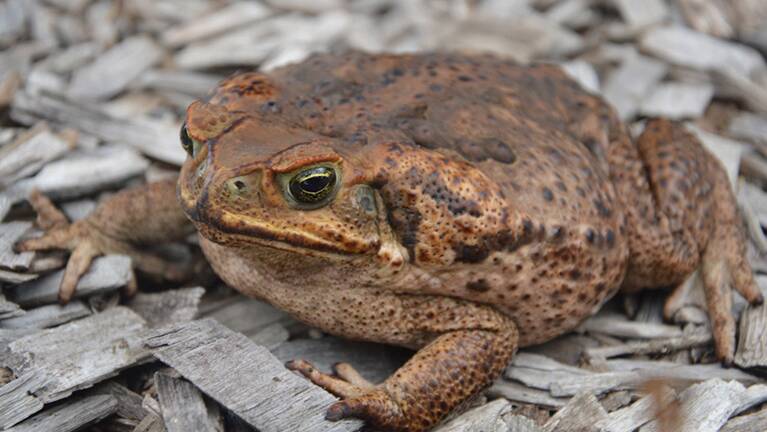
I’m not a Queenslander, but I am married to one. Queensland is a beautiful place to visit, albeit a bit hot. But there’s one thing I really don’t enjoy on our visits - the cane toads.
Subscribe now for unlimited access.
or signup to continue reading
So it’s been interesting to read recently that the cane toad genome has been sequenced – an advancement that might eventually help in ridding us of these amphibian pests.
DNA, whether it’s from a human, a banana, or a cane toad, is all made of the same thing – simple little building blocks called nucleotides.
Each nucleotide is made of three parts: a sugar called deoxyribose, a group of phosphate atoms, and a nitrogen rich molecule that we call a base.
There are four different types of these bases, giving us four different types of nucleotides.
As geneticists we use shorthand and simply call these four nucleotides A, C, G and T. Genome sequencing is a process used to figure out the sequence of all these As and Cs and Gs and Ts that make up the DNA of an organism.
A team of scientists based at the University of NSW has now done exactly that for the cane toad, figuring out the order of the approximately 3 billion nucleotides that make up its DNA.
At present we have no effective way of containing cane toad populations.
Just sequencing their genome alone isn’t enough to stop cane toads from continuing to spread and impact on native wildlife.
But it might give us some insights into the toad’s weaknesses.
Biological control is a method that uses the natural “enemies” of pest species to reduce their numbers.
It’s the reason that cane toads were introduced into Australia in the first place – they were supposed to control cane beetles. We all know how well that worked out.
But now that we know their genome sequence, we might also be able to find a biocontrol agent, such as a virus, that can kill them.
The tricky part to using a virus as a biocontrol agent is that it must only specifically attack the intended target – in this case the cane toad – and not impact on other species, such as native frogs and toads.
Scientists are now searching through the sequence of the cane toad genome for traces of viruses that might specifically attack the toads.
And if they can find one we might finally be rid of these horrible pests.
Dr Mary McMillan is a lecturer at the University of New England’s School of Science and Technology

